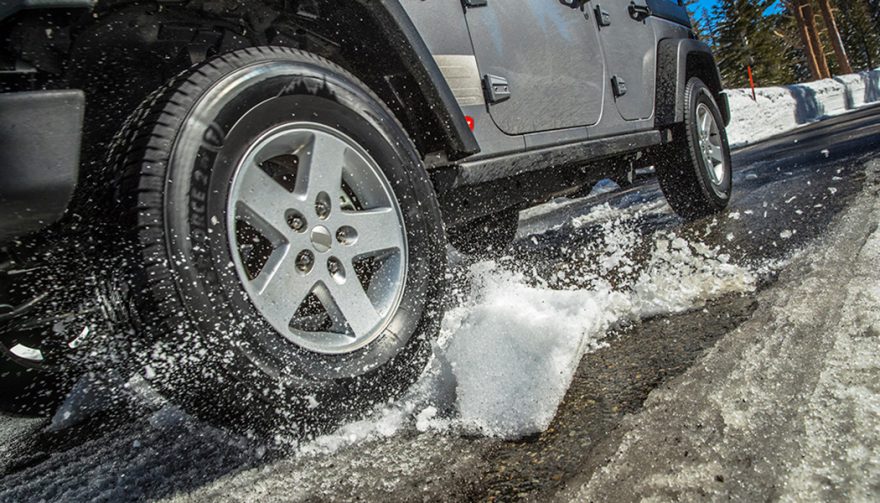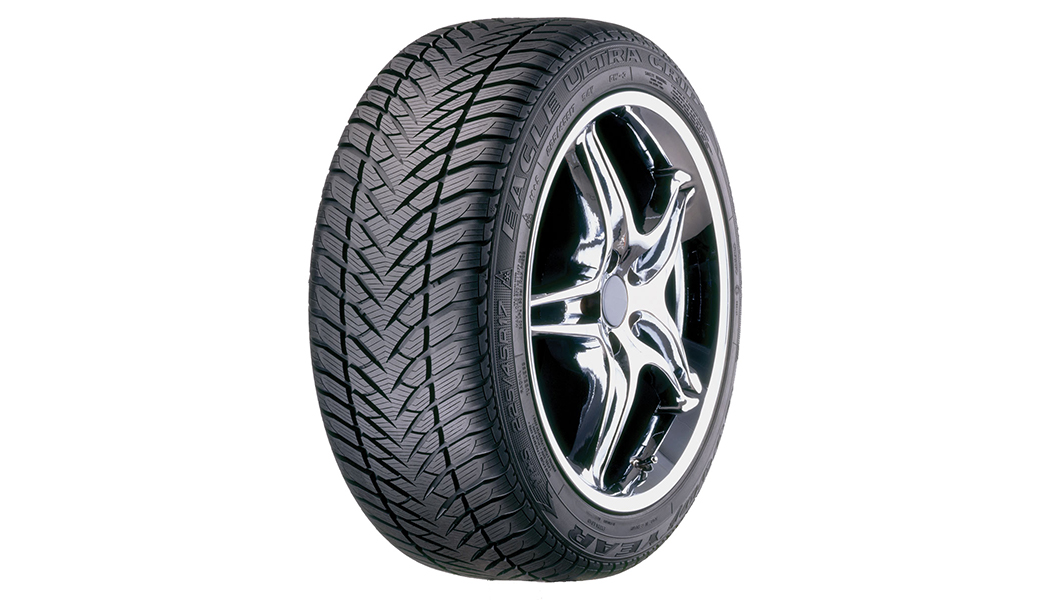
Winter road conditions can be tough on a car not to mention their owners. That's why you need the best snow tires. Here's how to find them.
Best Snow Tires – Keeping the Shiny Side Up in Snow and Ice
It’s that time of year again when the clouds open up and that beautiful, fluffy white stuff falls bringing joy to the hearts of ski resort operators everywhere. Kids build snowmen, dogs romp through the drifts and cars riding on All Season rubber slide into intersections smashing into each other. Then there’s the high school kid who can’t resist cutting cookies in the school lot. His All-Season tires don’t grip and he takes out two teachers’ cars. Winter road conditions can be tough on a car not to mention their owners. That’s why you need the best snow tires.
Before all you folks with crossovers, SUVs, and trucks equipped with AWD or 4WD start chanting “Bring it on,” let me remind you that drivetrains turn axles, they don’t touch the pavement. In fact, when everything is going to plan, the only things on your car that touch the road are your tires. Tires play a major role in keeping your ride on the road and under control. Snow, ice, slush and ice-cold temperatures can seriously interfere with that mission. And that’s why the best snow tires make so much sense.
Full disclosure, not everybody needs snow tires. It depends on the climate you live in obviously, but it also depends if you have the luxury to skip a commute and work from home, how robust your public transportation is, and how much faith you have in Uber and Lyft drivers (and whether or not they have the best snow tires). But for our purposes, we are going to assume you want the freedom of mobility regardless of the road conditions.
The ABCs of Snow Tire Selection
When it comes to tires, any kind of tires, there are three things to consider; tread design, tread depth and compound. When you apply those characteristics to a snow tire, this is what you’re looking for:
- Tread Design. Winter tires tend to look more extreme than all season or summer tires. That’s mostly because of their gripping optimized tread design filled with slits (called siping) that put the torque on the road, not the top layer of snow or ice.
- Tread depth. The space between tread blocks are the channels where snow, ice, slush, and water are channelled out from under the tire. By necessity, these channels have to be deeper than you’ll find on all season tires.
- Compound. Maybe the most important feature of a winter tire is the chemical recipe used to create cold resistant rubber. Even if there’s no snow, temperatures can reach extreme lows causing the rubber on all season tires to harden and stiffen up. Specially formulated winter tires don’t have that problem and remain pliable optimizing traction.
- Size. Go with the OEM tire or size that came with the vehicle to be safe. You can find that in the manual or on the placard located on the driver door frame. Also, thinner is more effective than wider. Wide tires have a snowplow characteristic that floats the tire up and on top of the snow. Thinner tires slice and push down. Think of a pizza cutter going through hot cheese compared to a regular knife.
- Studless or Performance. Snow tires come in two flavors. The most aggressive, the ones with the best performance on snow, ice, or wet pavement is the studless tire. These have specially formulated compounds that perform well in sub-zero temps and have significantly better gripping in adverse conditions than the performance tire. The downside is they don’t brake or maneuver nearly as well on dry pavement. If you don’t live in a Buffalo-like area and 2’ of snow is considered a blizzard, the performance winter tire should be your choice. It gives you superior performance over all season tires and behaves much better than studless tires on cleared roads.
- Get Four. Don’t cheap out on the protection of you and your passengers and your ride by just buying two tires. Even if you have an RWD or FWD vehicle, all four tires are needed to have adequate control in the snow.
That’s the quick course in evaluating snow tires. Armed with this info you’ll be able to survive any volumetric driving event (tire talk for driving through snow or slush).
Top Selling Winter Tires
So, what’s are the best snow tires for you? That’s really up to you to determine for all the driving and climate reasons listed above. But we can tell you what other people are buying, and if money talks, then these qualify as the hottest winter tires sold last season.
- Goodyear Ultra Grip. What the Ultra Grip line brings is superior performance in winter conditions, and versatility. Most tires are designed for a specific type of vehicle. Goodyear’s engineering allows this popular tire to be mounted on sedans, coupes, crossovers, minivans, and SUVs.
- Bridgestone Blizzak WS80. Probably the best balance of price and performance for coupes and sedans. See if you can follow this. The NanoPro-Tech Multicell hydrophilic compound that this thing is made of wicks water off the road while microscopic bite particles, blended into the rubber dig into icy surfaces. The Blizzak has been a popular line for years.
- Michelin’s X-tra-Ice. Designed for light trucks and most crossovers, the secret of X-tra-Ice’s performance is the silica-based winter tread and a remarkable compound. It performs in both cold and warm conditions making it ideal for areas with mild or wet winters.
- Bridgestone Blizzak DM-V2 for Trucks. That same NanoPro-Tech Multicell hydrophilic thing that works so well on the Blizzak for cars works its magic on these tires which are sized for trucks and body on frame SUVs. Thanks to the siping design this tire flushes away slush and grips on snow.
- Firestone Winterforce UV for Trucks. Buying a set of tires that you will only use for a few months each year can put pressure on your bank account. These tires outperform all-season rubber but are among the most economical of the winter tires for trucks.
If you have winter tires, take some time this week to check tread depth. The only thing worse than not having snow tires is having snow tires mounted that don’t perform. Unlike summer tires, manufacturers recommend replacing winter tires earlier. At around 4/32-inch of tread. If you find yourself in the market, we hope this list will give you a head start in making a decision on getting the best snow tires.






